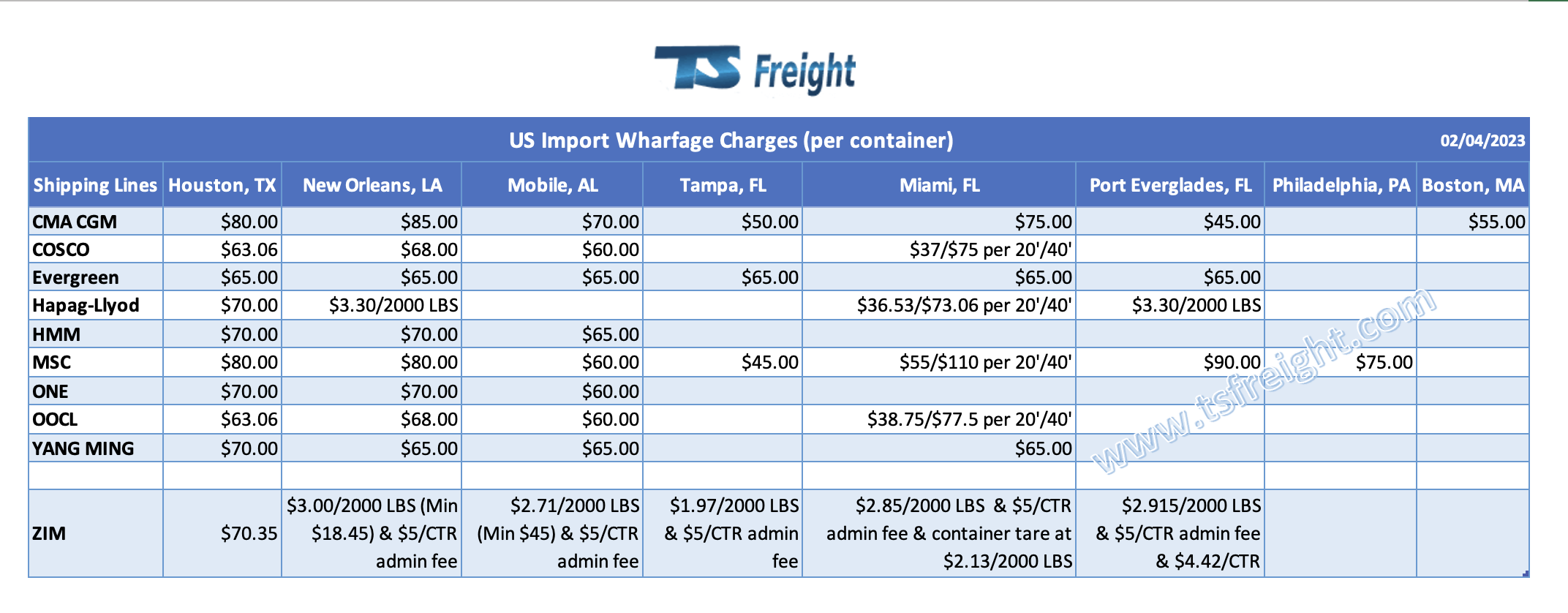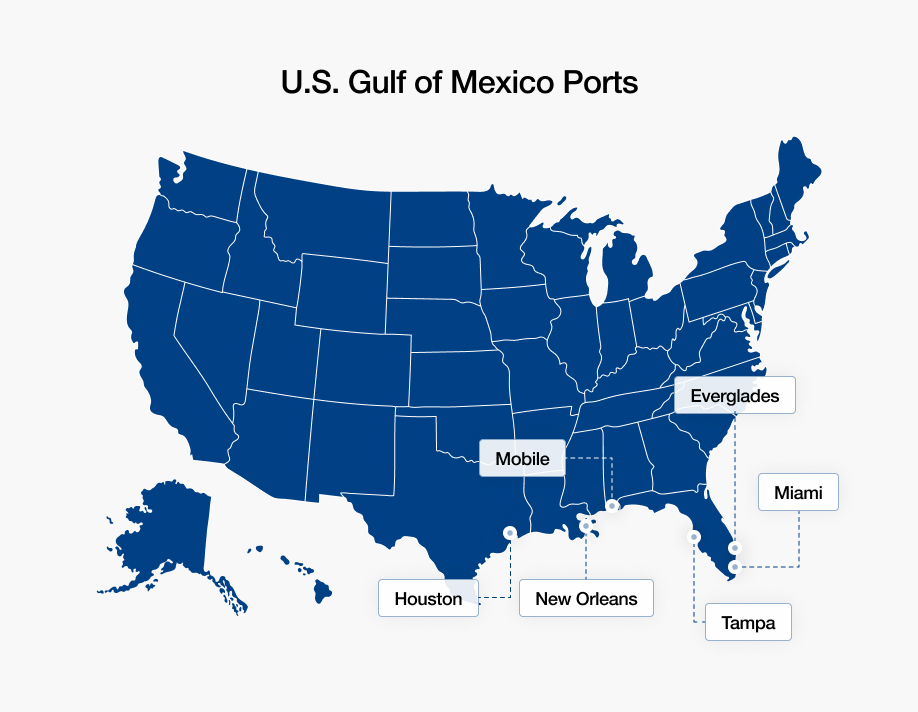What is Wharfage Charges for U.S. Shipments?
Get an overview of wharfage charges in the US, and learn why they are applied to shipments.
Table of Contents
As an importer and forwarder staff, trader, or a novice in the shipping and trading business in the U.S., you might have seen the term “wharfage” charge in your shipping invoices, and perhaps curious to know what it meant; maybe because you are yet to fully understand all the terminologies in the maritime sector. Sometimes, the wharfage appears separately in the invoice, and other times, it doesn't.
So, if you are curious to know what Wharfage or wharfage charges are for U.S. shipments, you are in luck to read this article.
What is Wharfage?
Wharfage is a fee the exporters and importers pay to the ocean carriers to cover the freight terminal or port authority’s cost of using the wharf for loading and offloading cargo to or from a vessel. Wharfage charge is usually fixed and published yearly by port operators.
To have a clearer understanding of what wharfage is, you need to first look at the term “wharf.” A wharf is a fixed man-made structure where ships stop to load and offload cargo in a port or shipping terminal.
Simply put, wharfage is the fee you pay to use a wharf. Therefore, a vessel bearing cargo will incur two wharfage charges: the first in the wharf where it loads the cargo (original port), and the second wharf where it unloads the inbound cargo (destination port).
Keep reading to learn more about wharfage and how it differs from other related charges.
Who Issues the Wharfage Charge, Who Pays the Charge, and Why?
A wharfage is a fee charged by the freight terminal or port authority to the carriers that use a wharf for loading and offloading cargo to or from their vessels.
The carriers, in turn, will charge this wharfage fee back to their customers (the importers or the exporters) mostly per container or by weight.
So who will finally pay for the wharfage fee? Importer or exporter? The payment terms under International Chamber of Commerce (ICC) determine which party is responsible for paying wharfage fees charged by carriers.
The purpose of the wharfage charge is to cover the costs of maintaining the port's infrastructure and equipment on the wharf.
How are Wharfages Calculated?
When a vessel arrives at a port, the cargo is weighed to determine the wharfage charge. Typically, the overall weight of the cargo is calculated in metric tons or volume, depending on which measurement unit is bigger, to give the wharfage charge.
Some port authorities can also calculate the wharfage by weighing each unit of the container. However, cargo type will affect the wharfage estimation, but port authorities usually keep to a certain range of wharfage charges to avoid scaring customers away with high bills.
As a U.S. importer or exporter, you may want to ask how you will be charged when you import or export ocean shipments, maybe because the above information is too official. Don’t be confused; No matter how the freight terminal or port authority charges the carriers, most of them simply charge their clients per container, which is usually published on their websites.
Which Ports in the U.S. Do Carriers Charge Wharfage?
According to the FMC port authority tariffs, the wharfage charges apply to all U.S. Gulf of Mexico ports and U.S. Atlantic ports being served by the carriers.
You can use the data below to compare the wharfage charges of carriers and how they vary. This data will help you know the charges you're likely to pay if you're expecting a shipment in any of the listed ports.
Below is a list of US ports and their wharfage charges.

The above list shows that the ports where carriers charge wharfage are mostly in the U.S. Gulf of Mexico.
You may want to ask, where are these ports located? Don’t worry; we got you covered. Below is a map showing these ports and their respective locations.

Why is Wharfage Charge Also Called Cargo Dues?
Wharfage charges are also referred to as cargo dues because they essentially serve the same purpose.
Both charges are imposed by port operators to cover the costs of maintaining and operating port infrastructure and ensuring a safe and efficient environment for cargo to be loaded and unloaded.
The terms "wharfage charge" and "cargo dues" may be used interchangeably depending on the port or country.
Wharfage vs. Port Charges: What's the Difference?
The main difference between wharfage and port charges is the scope of the fees.
- Port charges cover all charges for using terminal services, including Terminal Handling Charge (THC), Demurrage and Detention (D&D), anchorage fees, etc.
- Wharfage is specifically for cargo loading and unloading, calculated by cargo weight
- Port charges are mandatory for all ports, while not all ports charge wharfage.
Conclusion
In conclusion, wharfage is a fee charged for cargo loading and unloading activities at the port. Wharfages are calculated based on the weight or volume of the cargo and are essential for maintaining port infrastructure and equipment to make it conducive for all shipping activities.
Wharfages are charged in U.S. Gulf of Mexico ports and U.S. Atlantic ports being served by the carriers. With the above form, you should clearly know which ports charge wharfage, and hope this article solve all your questions about wharfage.